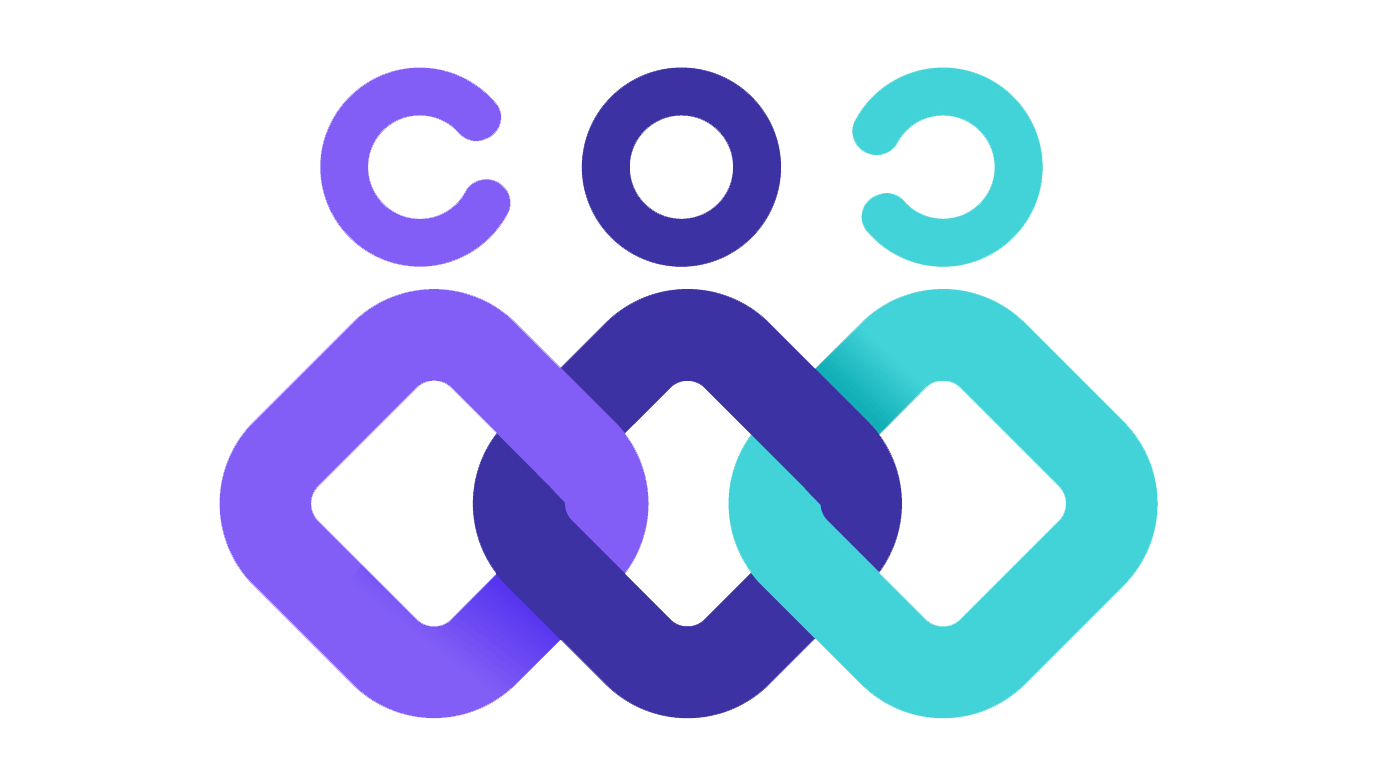- Home
- Product
-
Product Overview
Team Insight combines performance management, recognition, and local rewards in a single loop — so teams grow fairly, stay engaged, and feel valued.
PRODUCT
Employee Performance Management Software
Tools to improve performance and growth tracking.
Employee Recognition & Rewards Software
Build positivity by valuing daily wins.
Employee Engagement Software for SMEs
Drive productivity with clear access and accurate tracking.
OKR & KPI Software for Small Teams
Tools to improve performance and growth tracking.
-
- Resources
- Capture leads and make buying easySed ut perspiciatis unde omnis iste natus error sit voluptatem accusantium doloremque laudantium, totam aperiam, eaquecy epsa abillo inventore veritatis architecto beatae
- Complete documentation
- Working materials in Figma
- 100GB cloud storage
- 500 team members
- Complete documentation
- Working materials in Figma
- 100GB cloud storage
- 500 team members
 Capture leads and make buying easySed ut perspiciatis unde omnis iste natus error sit voluptatem accusantium doloremque laudantium, totam aperiam, eaquecy epsa abillo inventore veritatis architecto beatae
Capture leads and make buying easySed ut perspiciatis unde omnis iste natus error sit voluptatem accusantium doloremque laudantium, totam aperiam, eaquecy epsa abillo inventore veritatis architecto beatae- Complete documentation
- Working materials in Figma
- 100GB cloud storage
- 500 team members
- Complete documentation
- Working materials in Figma
- 100GB cloud storage
- 500 team members
Capture leads and make buying easySed ut perspiciatis unde omnis iste natus error sit voluptatem accusantium doloremque laudantium, totam aperiam, eaquecy epsa abillo inventore veritatis architecto beatae- Complete documentation
- Working materials in Figma
- 100GB cloud storage
- 500 team members
- Complete documentation
- Working materials in Figma
- 100GB cloud storage
- 500 team members
 Capture leads and make buying easySed ut perspiciatis unde omnis iste natus error sit voluptatem accusantium doloremque laudantium, totam aperiam, eaquecy epsa abillo inventore veritatis architecto beatae
Capture leads and make buying easySed ut perspiciatis unde omnis iste natus error sit voluptatem accusantium doloremque laudantium, totam aperiam, eaquecy epsa abillo inventore veritatis architecto beatae- Complete documentation
- Working materials in Figma
- 100GB cloud storage
- 500 team members
Latest Product Updates
Strong Signals
Accelerate Your Monitoring Efforts with ‘Team Insight,’ an AI-Powered Solution.
Smart Ideation
Enhance Your Creative Process with GenAI-Powered Ideation.
Knowledge Hub: Articles, Webinars...Explore our blog, webinars, and case studies to stay informed. Visit the Help Center for all the resources you needContent summary: Discover insights and expert advice through our blog to stay updated with the latest trends and solutions.
Discover insights and expert advice through our blog to stay updated with the latest trends and solutions.
Join our webinars for expert-led discussions and real-time learning from industry leaders.

Explore our case studies to see how our solutions drive success in real-world scenarios.

Visit our Help Center for quick answers, resources, and support to assist you every step of the way.
Articles, Webinars...
Explore our blog, webinars, and case studies to stay informed. Visit the Help Center for all the resources you need
RESOURCES
Blog Articles
Discover insights and expert advice through our blog
Webinars
Join our webinars discussions and learning from industry leaders.
CaseStudies
Explore our case studies
Help Center
Visit our Help Center for quick answers, resources.
-
- Success Stories
- Login
- Pricing
- Our Team
- Company
-
A Story of Growth, Trust, and Vision
Our journey is built on a commitment to empowering people and increasing employee productivity. By fostering trust and innovation, we aim to create a work environment where growth and success go hand in hand.
About Us: A team driven by innovation, focused on growth and productivity.
A team driven by innovation, focused on growth and productivity.
Contact us with any questions or feedback. Let’s boost productivity together.
A Story of Growth...
Our journey is built on a commitment to empowering people and increasing employee productivity. By fostering trust and innovation, we aim to create a work environment where growth and success go hand in hand.
ABOUT OUR COMPANY
About Us
A team driven by innovation, focused on growth and productivity.
Contact Us
Contact us with any questions or feedback. Let’s boost productivity together.
-
- Home temp

Imagine this: You’ve scheduled your weekly one-on-one, armed with an effective manager one on ones template, ready to dive into feedback and growth. But halfway through, the conversation fizzles into awkward silence or turns into a one-sided status report. Sound familiar? As a manager, your 1:1 meetings are goldmines for building trust, sparking innovation, and driving performance—but only if you sidestep the pitfalls that turn them into time sinks.
In this guide, we’ll zoom in on the five most common mistakes managers make when using an effective manager one on ones template, and how weaving in powerful coaching questions can flip the script. Drawing from real-world insights (like Google’s Project Oxygen) and backed by data, we’ll show you how to make every session count. Whether you’re leading a remote startup or a growing SME, mastering this will boost engagement by up to 57%—as one study reveals. Ready to level up? Let’s avoid those traps and unlock the full potential of your effective manager one on ones template.
Why Are 1:1 Meetings Crucial?
Using an effective manager one on ones template is one of the most impactful ways for managers to enhance team performance and engagement. These structured one-on-one sessions allow managers to provide meaningful feedback, discuss career aspirations, and address individual challenges in a focused, private setting. By consistently applying an effective manager one on ones template, managers ensure every meeting is productive, purposeful, and aligned with employee development goals.
One of the main benefits of these meetings is building trust. Employees who feel listened to and supported are more likely to engage openly, share ideas, and collaborate effectively. Regular one-on-ones, guided by a clear manager one-on-one template, help establish this foundation of trust. Employees gain confidence knowing they have a dedicated space to voice concerns, seek guidance, and receive recognition for their achievements. Think about it: In a world where remote work blurs boundaries, that dedicated time can prevent burnout before it hits—especially if you spot early signs like those outlined in our post on Burnout Prediction: 5 Hidden Signs to Spot Burnout.
Another critical advantage is personalized development. Managers can use the template to explore career growth opportunities, identify skill gaps, and set actionable goals tailored to each employee. Research from Qualtrics shows that employees who receive regular feedback from their managers demonstrate higher engagement and improved performance. Similarly, a study by The Marcus Buckingham Company found that engagement increased by 57% when team leaders frequently checked in with their team members. This demonstrates the measurable impact of structured one-on-one sessions, turning vague aspirations into concrete roadmaps.
Finally, using an effective one-on-one meeting template for managers helps create consistency and accountability. It ensures that meetings are not just a routine check-in but a strategic tool for improving team cohesion, motivation, and performance. Platforms like TeamInsight’s Employee Performance Management Software can make it easier to implement these templates, track progress, and ensure each session leads to meaningful outcomes. Without this structure, even the best intentions fall flat—leading straight into our first common mistake.
Benefits of 1:1 Meetings
Implementing an effective manager one on ones template brings significant advantages for employees, managers, and the overall organization. These structured meetings go beyond status updates—they provide a dedicated time to address challenges, offer feedback, and support professional growth. When done right, they tie directly into broader strategies like fair evaluations—explore more in our guide to Bias Reduced Performance Reviews: 7 Practical Tactics for Fair Evaluations.
Benefits for Employees
For employees, regular one-on-one sessions offer personalized feedback that helps improve performance and build confidence. Using an effective one-on-one meeting template for managers ensures that feedback is consistent, actionable, and constructive. Employees also gain clarity on their career path and development opportunities, as these meetings provide a platform to discuss goals, skill development, and future roles. Additionally, one-on-ones allow employees to raise concerns or discuss difficult issues in a safe environment, fostering psychological safety and trust. This openness isn’t just feel-good—it’s a retention booster, cutting turnover costs that SMEs dread (check our Employee Turnover Cost Calculator for SMEs: Cut Replacement Costs in 2025 for the numbers).
Benefits for Managers
From the manager’s perspective, structured one-on-one meetings are invaluable for guiding team development and identifying potential roadblocks before they escalate. A well-designed manager one-on-one template ensures that managers allocate time to discuss performance, career growth, and challenges systematically. These sessions also provide a chance to practice coaching questions, which help managers encourage reflection, problem-solving, and skill development in employees. Regular sessions also help managers boost motivation by recognizing achievements and addressing concerns proactively, contributing to a stronger, more aligned team. Pro tip: Layer in recognition tactics from our Employee Recognition and Rewards: What Works in 2025 [Real Examples] to amplify these wins.
Benefits for the Organization
Organizations benefit as well, as effective one-on-one meetings enhance overall productivity, engagement, and retention. Teams with managers who use an effective manager one on ones template consistently report higher collaboration and better problem-solving outcomes. Employees who feel heard and supported are more likely to stay with the company, reducing turnover and associated costs. Managers can also incorporate coaching questions into their routine check-ins to guide employees toward actionable solutions and continuous improvement.
In summary, the benefits of using an effective manager one on ones template are clear: employees receive feedback and career guidance, managers can steer team development and motivation through thoughtful coaching questions, and organizations see increased productivity, engagement, and retention. Investing in structured one-on-ones is a simple yet powerful strategy to strengthen teams and drive results—far beyond basic metrics like OKRs or KPIs (dive deeper in OKR vs KPI for SMEs: Unlock Success Without the Admin Overload).
Best Practices for 1:1 Meetings
Implementing an effective manager one on ones template is more than just scheduling a meeting. The way these sessions are conducted can significantly impact employee engagement, development, and overall team performance. By following best practices, managers can make each one-on-one productive, meaningful, and motivating—directly countering the mistakes we’ll unpack next.
1. Schedule Regular Meetings
Consistency is key. Most managers find that scheduling 30–60 minute sessions weekly or biweekly works best, especially for small teams. Regular one-on-ones create a reliable space where employees know they can share updates, challenges, and goals without feeling rushed. Using an effective manager one on ones template ensures that each meeting covers essential topics while allowing flexibility for employee-led discussion. Skipping this rhythm? That’s mistake #5—more on that later.
2. Prepare a Shared Agenda
A shared agenda helps both the manager and employee come prepared. Using an effective one-on-one meeting template for managers, outline key topics such as project updates, personal development, and feedback. Allow employees to add their own points, which encourages ownership and ensures the meeting addresses their most pressing concerns. This practice also makes the conversation structured and efficient, preventing the drift into irrelevant chit-chat.
3. Focus on Coaching, Not Reporting
The goal of 1:1 meetings is not to review every task or project detail. Instead, managers should focus on growth and problem-solving. Asking targeted coaching questions helps employees reflect on their challenges, explore solutions, and develop new skills. Examples of effective coaching questions include:
- “What obstacles are preventing you from achieving your goals this week?”
- “How can I support you better in your current projects?”
- “What’s one area you’d like to improve or learn more about this month?”
- “Which recent success are you most proud of, and why?”
- “If you could change one thing about your role, what would it be?”
These aren’t just icebreakers—they’re tools to unearth insights, much like gamifying daily tasks in our Gamification at Work: Turning Everyday Wins into Interesting Things.
4. Listen More Than You Speak
Managers often dominate conversations, but effective one-on-ones require active listening. Aim to let employees speak at least 50–60% of the time. Taking notes and reflecting back what you hear demonstrates attentiveness and encourages open communication. Incorporating coaching questions naturally supports this dialogue, prompting employees to think critically and share honestly. Remember, silence is your ally here—use it to let breakthroughs emerge.
5. Build Trust and Psychological Safety
One-on-one meetings are a prime opportunity to strengthen trust. Encourage transparency and confidentiality, so employees feel comfortable sharing concerns or ideas. A structured effective manager one on ones template ensures that trust-building is a recurring part of the conversation. Especially in remote teams, personal check-ins—asking about well-being or challenges outside of work—can significantly improve employee morale. This ties into why wellbeing matters so much—read our Why Employee Wellbeing is Critical: Impact on Performance, Productivity, and Retention for the full scoop.
6. Set Clear Action Items
Every session should conclude with next steps or action items. Clarifying responsibilities, deadlines, and expectations ensures accountability and progress. This turns insights from discussions into tangible results. When paired with thoughtful coaching questions, action items motivate employees to take ownership of their development and performance. Without them? You’re setting up for mistake #3.
7. Follow Up and Track Progress
Effective one-on-ones don’t end when the meeting is over. Use your effective manager one on ones template to track previous discussions, follow up on action items, and monitor progress over time. Regular review not only demonstrates commitment but also helps managers identify patterns and address recurring challenges before they escalate. Tools like TeamInsight’s Employee Performance Management Software shine here, integrating seamlessly with platforms like Microsoft 365 or Slack (see From Inbox to Insight: Connecting Microsoft 365, Slack, and Jira for HR).
Examples from Top Companies
Many top-performing organizations demonstrate the power of structured one-on-one meetings and the use of an effective manager one on ones template. By looking at these examples, managers can learn practical approaches to boost engagement, development, and performance—especially when avoiding the mistakes that plague even the best teams.
Google – Project Oxygen
Google’s Project Oxygen emphasized that managers who regularly held one-on-one meetings with their team members had higher-performing teams. Using a consistent template helped managers provide timely feedback, discuss career growth, and solve problems before they escalated. Managers were trained to use coaching questions to encourage employees to reflect, set goals, and take ownership of their development. This structured approach contributed to higher engagement scores and stronger team collaboration. The lesson? Even tech giants falter without an effective manager one on ones template—Google fixed it by prioritizing coaching over control.
Zapier – Remote Team Communication
Zapier, a fully remote company, leverages video-based one-on-ones to maintain human connection and motivation. Using an effective manager one on ones template, Zapier managers conduct weekly sessions that focus on challenges, wins, and career development. Incorporating coaching questions allows employees to discuss obstacles openly and brainstorm solutions. This has been critical in fostering trust, engagement, and accountability across distributed teams. For remote setups, this model shows how an effective manager one on ones template can bridge the distance, preventing isolation that leads to disengagement.
Reddit – Employee-Driven Agenda
At Reddit, employees are encouraged to set the agenda for their one-on-one meetings. By combining this with an effective one-on-one meeting template for managers, the company creates a sense of ownership and autonomy among team members. Managers use coaching questions to guide discussions, uncover hidden challenges, and support employees in achieving their goals. This approach has resulted in higher job satisfaction and more proactive team members. It’s a reminder that an effective manager one on ones template isn’t manager-centric—it’s collaborative.
LifeLabs Learning – CAMPS Framework
LifeLabs Learning teaches managers to apply the CAMPS framework (Certainty, Autonomy, Meaning, Progress, Social Inclusion) in one-on-one meetings. Using a structured template, managers focus on actions that enhance motivation and growth. Incorporating targeted coaching questions ensures that conversations are not just routine but meaningful and actionable. Teams using this approach report higher engagement, improved retention, and stronger relationships between managers and employees. Applying CAMPS via an effective manager one on ones template turns abstract motivation into daily wins.
In summary, these examples show that regardless of industry or team structure, an effective manager one on ones template combined with thoughtful coaching questions drives employee engagement, professional growth, and organizational performance. Learning from leading companies provides practical insights that any manager can implement immediately—far better than repeating the same old errors.
Practical Tips for Employees Before 1:1 Meetings
To make the most out of one-on-one meetings, employees should prepare thoughtfully. Using an effective manager one on ones template ensures that both managers and employees get the most value from the conversation. Here’s how to show up ready and make it a two-way street.
1. Add Your Topics to the Agenda
Before the meeting, jot down items you want to discuss. This may include project updates, challenges, or career aspirations. A shared agenda ensures that your priorities are covered alongside the manager’s points. This small step empowers you and keeps the session on track.
2. Review Your Goals and Progress
Reflect on your recent accomplishments and ongoing projects. Understanding where you stand helps you communicate effectively and set actionable next steps during the meeting. Tie this back to your OKRs or KPIs for context—it’s a game-changer.
3. Prepare Questions and Challenges
Think about any obstacles you are facing. Using coaching questions such as “What support do I need to succeed?” or “Which skills should I develop next?” encourages productive discussion and actionable feedback. These mirror the manager’s toolkit, fostering reciprocity.
4. Focus and Minimize Distractions
Turn off notifications, close unrelated tabs, and dedicate your attention fully to the conversation. In remote settings, make sure your camera and microphone work properly for clear communication. Presence matters—it’s the foundation of trust.
5. Be Open and Engaged
Participate actively, provide honest updates, and be receptive to feedback. One-on-one meetings are a two-way dialogue, not just a status check. Your input can even inspire better coaching questions from your manager.
By following these practical steps, employees can contribute to a productive session that supports their growth and strengthens the manager-employee relationship. When both sides prep with an effective manager one on ones template, magic happens.
Avoid These 5 Common Mistakes in Effective Manager One-on-Ones Template with Coaching Questions
Even experienced managers sometimes struggle with one-on-one meetings. Avoiding common pitfalls ensures that sessions remain productive, motivating, and growth-focused. Here’s an expanded look at the top five mistakes—each with real fixes using your effective manager one on ones template and targeted coaching questions. (For why reviews often fail without this structure, see Performance Reviews for SMEs: Why They Fail – and How AI Fixes Them.)
Common Mistake #1: Talking Too Much
Managers should let employees lead much of the conversation—yet many hijack the agenda with their own monologues. This kills openness and turns 1:1s into lectures.
Fix with Coaching Questions: Shift to inquiry mode. Start with, “What’s top of mind for you today?” and follow up with reflection prompts like “Tell me more about that challenge.” Aim for 60% employee talk time. Track this in your effective manager one on ones template to build the habit. Result? Deeper insights and empowered teams.
Common Mistake #2: Focusing Only on Status Updates
1:1s should prioritize coaching, feedback, and problem-solving—not a project dump that Slack or Jira already handles.
Fix with Coaching Questions: Redirect with growth-oriented queries: “Beyond the updates, what’s one win you’re proud of this week?” or “How does this project align with your long-term goals?” Embed these in your effective manager one on ones template’s agenda section. This elevates the meeting from tactical to transformational, boosting engagement as per those 57% stats.
Common Mistake #3: Skipping Action Items
Ending without clear responsibilities and deadlines leaves discussions in limbo—great ideas fizzle, accountability vanishes.
Fix with Coaching Questions: Close strong: “What’s one actionable step we can take from this?” or “By when will you try that new approach?” Document them right in your effective manager one on ones template, with follow-up reminders via TeamInsight’s Employee Performance Management Software. This turns talk into traction, measurable in your next session.
Common Mistake #4: Neglecting Employee Feedback
Forgetting to ask for input on your management style erodes trust—employees feel unheard, engagement dips.
Fix with Coaching Questions: Make it reciprocal: “What feedback do you have for me today?” or “How can I support you better as your manager?” Slot this into your effective manager one on ones template’s reflection category. It’s vulnerable but vital—employees who give feedback are 3x more engaged, per Gallup.
Common Mistake #5: Inconsistent Scheduling
Irregular 1:1s signal low priority, breeding frustration and unmet needs. Life gets busy, but consistency is non-negotiable.
Fix with Coaching Questions: Lock it in with calendar blocks and start each with “How has the time since our last chat been?” Use your effective manager one on ones template to log patterns over time. For SMEs juggling tools, integrate with workflows like those in From Inbox to Insight: Connecting Microsoft 365, Slack, and Jira for HR. Regularity? It’s the glue holding everything together.
By dodging these in your effective manager one on ones template, you’ll harness coaching questions to create sessions that inspire, not drain.
Coaching Questions for Managers (Expanded)
Using coaching questions transforms one-on-ones into actionable and meaningful sessions. Here’s a more extensive set of questions categorized by purpose—perfect for plugging into your effective manager one on ones template:
Career and Development
- “What skills would you like to develop in the next 3–6 months?”
- “Where do you see yourself growing within the team or company?”
- “Which projects excite you most, and why?”
- “Are there opportunities you’d like to explore that align with your career goals?”
- “How can we map your next promotion path using our current tools?”
Challenges and Problem-Solving
- “What obstacles are preventing you from achieving your objectives?”
- “Which task or project is causing the most frustration right now?”
- “How can I help remove barriers for you?”
- “What’s one problem you’d like to tackle differently next time?”
- “If resources weren’t an issue, how would you approach this differently?”
Motivation and Engagement
- “What part of your work gives you the most satisfaction?”
- “Which achievements are you most proud of recently?”
- “Are there aspects of your role you’d like to change or improve?”
- “What motivates you to do your best work every day?”
- “How can we celebrate small wins more effectively in our team?”
Team and Collaboration
- “How can we improve team communication or collaboration?”
- “Are there team dynamics that make your work harder?”
- “How can I support you in helping the team succeed?”
- “Who on the team could you partner with more effectively?”
- “What’s one idea you have to boost our group’s energy?”
Feedback and Reflection
- “Is there feedback you’d like to give me as your manager?”
- “Which recent feedback has been most useful or actionable?”
- “How do you prefer to receive feedback in the future?”
- “What have you learned from recent successes or challenges?”
- “Looking back, what’s one adjustment we should make for next time?”
These 25+ coaching questions are your secret weapon—customize them in your effective manager one on ones template for tailored impact.
Conclusion
One-on-one meetings are a cornerstone of effective management, and using an effective manager one on ones template can dramatically improve team performance, engagement, and employee satisfaction. These sessions provide a dedicated space for feedback, career development, problem-solving, and relationship building between managers and employees. When conducted consistently and thoughtfully—free from those five common mistakes—one-on-ones strengthen trust, clarify goals, and help employees feel supported and motivated.
For managers, structured one-on-ones offer an opportunity to guide team development, address challenges before they escalate, and enhance overall productivity. Incorporating coaching questions ensures that discussions are not only about status updates but also about growth, learning, and actionable next steps. Employees who actively participate in these sessions gain clarity on their roles, understand expectations, and receive the guidance they need to succeed—linking directly to strategies for What Is Employee Engagement? Strategies for Every Level of Your Team.
Organizations also benefit from improved engagement, higher retention, and increased efficiency when managers prioritize regular one-on-ones. To make these meetings more effective and actionable, tools like TeamInsight’s Employee Performance Management Software can help managers track progress, structure discussions, and ensure that every session leads to measurable outcomes.
Investing time in structured one-on-one meetings is a simple yet powerful strategy to boost motivation, enhance performance, and create a thriving workplace culture. Avoid the mistakes, embrace your effective manager one on ones template, and watch your team soar. What’s one coaching question you’ll try next? Share in the comments!














